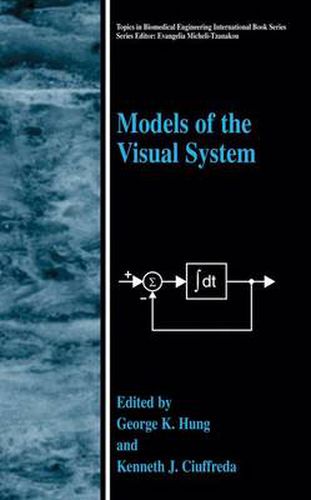Readings Newsletter
Become a Readings Member to make your shopping experience even easier.
Sign in or sign up for free!
You’re not far away from qualifying for FREE standard shipping within Australia
You’ve qualified for FREE standard shipping within Australia
The cart is loading…






This title is printed to order. This book may have been self-published. If so, we cannot guarantee the quality of the content. In the main most books will have gone through the editing process however some may not. We therefore suggest that you be aware of this before ordering this book. If in doubt check either the author or publisher’s details as we are unable to accept any returns unless they are faulty. Please contact us if you have any questions.
Over the past 30 years, with improvements in optics, electronics, and computer technology, great strides have been made in the quantitative analysis of the visual system. A number of books on eye movement research have been written that have dealt with specific aspects of eye movement control. This text provides a comprehensive overview of multiple aspects of the visual system, containing modelling and detailed quantitative analyses. Including the most recent research findings in 2001, this updated and quantitative model-based book contains contributions from some of the best vision scientists in the world in their respective fields. They have expertise in a wide variety of fields, including bioengineering, basic and clinical visual science, medicine, neurophysiology, optometry, and psychology. The text covers modelling and quantitative analysis of optical, neurosensory, oculomotor, perceptual and clinical systems. It includes only those techniques and models that have such fundamentally strong physiological, control system, and perceptual bases that they will serve as foundations for models and analysis techniques in the future. The book is aimed first towards seniors and beginning graduate students in biomedical engineering, neurophysiology, optometry, and psychology, who will gain a broad understanding of quantitative analysis of the visual system. In addition, it has sufficient depth in each area to be useful as an updated reference and tutorial for graduate and post-doctoral students, as well as general vision scientists.
$9.00 standard shipping within Australia
FREE standard shipping within Australia for orders over $100.00
Express & International shipping calculated at checkout
This title is printed to order. This book may have been self-published. If so, we cannot guarantee the quality of the content. In the main most books will have gone through the editing process however some may not. We therefore suggest that you be aware of this before ordering this book. If in doubt check either the author or publisher’s details as we are unable to accept any returns unless they are faulty. Please contact us if you have any questions.
Over the past 30 years, with improvements in optics, electronics, and computer technology, great strides have been made in the quantitative analysis of the visual system. A number of books on eye movement research have been written that have dealt with specific aspects of eye movement control. This text provides a comprehensive overview of multiple aspects of the visual system, containing modelling and detailed quantitative analyses. Including the most recent research findings in 2001, this updated and quantitative model-based book contains contributions from some of the best vision scientists in the world in their respective fields. They have expertise in a wide variety of fields, including bioengineering, basic and clinical visual science, medicine, neurophysiology, optometry, and psychology. The text covers modelling and quantitative analysis of optical, neurosensory, oculomotor, perceptual and clinical systems. It includes only those techniques and models that have such fundamentally strong physiological, control system, and perceptual bases that they will serve as foundations for models and analysis techniques in the future. The book is aimed first towards seniors and beginning graduate students in biomedical engineering, neurophysiology, optometry, and psychology, who will gain a broad understanding of quantitative analysis of the visual system. In addition, it has sufficient depth in each area to be useful as an updated reference and tutorial for graduate and post-doctoral students, as well as general vision scientists.